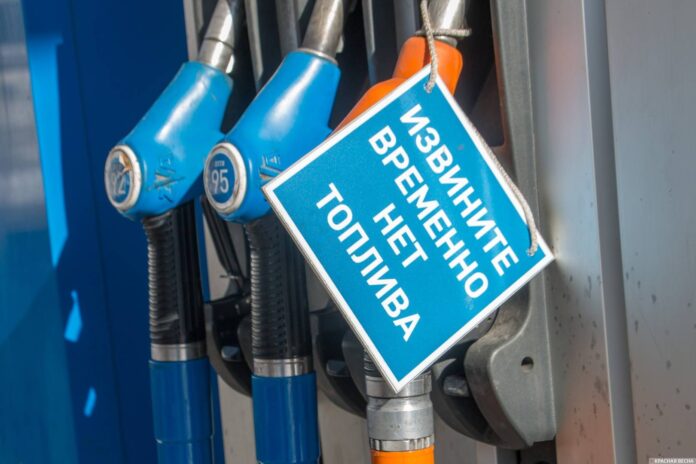Massive queues at petrol stations: drivers wait for hours
In recent days, there has been an acute shortage of petrol in the occupied Crimea. Motorists are forced to queue for several hours, and about half of the petrol stations have stopped selling petrol altogether. This situation is dramatically affecting the lives of the peninsula's residents, from getting to work to using public transport.
What exactly is happening: symptoms of the crisis
Closing/temporary suspension of petrol station operations
According to Russian media and local resources, about half of the Crimean petrol stations temporarily stopped selling petrol.
Some chains report a complete lack of fuel supply to certain filling stations.
Because of this, many petrol stations simply close down to avoid spending money on maintenance when they have zero profit.Long queues and restrictions on leave
Where there is still fuel available, cars are lined up in long queues - sometimes drivers arrive in the evening and «spend the night» at the petrol station so they can refuel in the morning.
Sometimes the wait takes 5-6 hours.
In addition, some petrol stations have limits on the number of litres you can buy per car or other priority card systems.Lack of petrol brands, sharp price increases
It is reported that all petrol brands have disappeared, even the most expensive A100.
Prices are starting to rise rapidly, especially when there is a shortage and limited supply. Switching to diesel or other fuels
In some cases, petrol stations sell diesel or gas because there is no petrol.
Often, petrol only returns for a few hours, then disappears again.
Causes of the crisis
Several factors have overlapped to create the current scale of the deficit:
Ukrainian drones strike Russian oil refineries
Intense attacks lead to a reduction in fuel production.
As a result, some refineries are actually shutting down or operating at reduced capacity.Maintenance, repair, and reduction of production capacity
Some plants in Russia are still scheduled to undergo preventive maintenance, which reduces the amount of fuel consumed in total.
Analysts are talking about an overall drop in gasoline production in Russia by ~10 % due to the strike campaigns + maintenance.Logistical constraints and financial problems of petrol stations
Some independent petrol stations are unable to stock large amounts of fuel due to high costs or limited credit terms.
Long delivery chains, sanctions, and Russia's general problems with logistics affect deliveries to Crimea.Political decisions - export ban, price control
The Russian authorities announced a ban on petrol exports in order to concentrate resources within the country.
At the same time, state price controls and sanctions make it difficult for petrol stations to operate in the market.
Implications for the population and the economy
Restricted movement of people and vehicles
Public transport, taxis, and company cars are running intermittently or are shut down due to the lack of fuel.
Car owners are forced to plan their trips very carefully, sometimes refusing to travel unnecessarily.Risk to agriculture and specialised machinery
Seasonal activities (sowing, harvesting) often depend on the supply of fuel. Shortages can delay or complicate these processes.
Specialised machinery used in the agricultural or construction sectors is also in short supply.Economic losses for business and transport
Companies that depend on transportation and logistics incur costs due to downtime.
Rising fuel prices increase the cost of goods and transportation.Social tensions and discontent
People complain about hopelessness, attempts to «buy in advance», and unequal access to fuel.
Some people turn to local chats and maps to keep track of where fuel is still available.
How the occupation authorities react
Calls for order, promises of solutions
The authorities say they are working to normalise the situation and ask people not to create a stir.
In Crimea, leader Aksyonov acknowledges fuel problems and promises to stabilise supplies within two weeks.Prioritisation of state-owned enterprises/budgetary entities
Some filling stations operate primarily for government or «priority» customers.Price controls and export restrictions
Petrol exports from Russia have been restricted or frozen to preserve resources for domestic consumption.
Official price regulation sometimes leads to an «artificial shortage», as gas stations are not interested in selling at unprofitable prices.
Forecasts and development scenarios
If the situation does not change, the deficit may become even deeper, affecting not only petrol but also other categories of fuel.
Stricter regulations (rationing, cards, queues) may be introduced as official measures.
Growth of the shadow fuel market - resale and smuggling - due to a mismatch between demand and official supply.
If the fighting and oil refinery strikes continue, the impact of the crisis could be long-term.
The intervention of federal Russian structures or the mobilisation of resources from neighbouring regions are attempts to mitigate the problem logistically.




